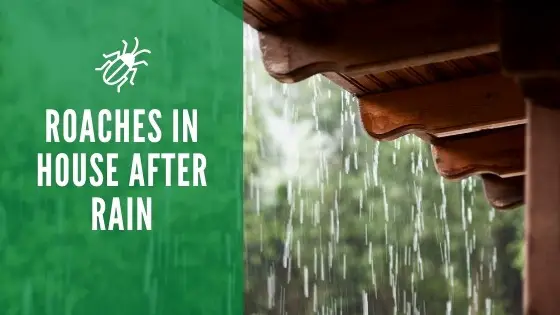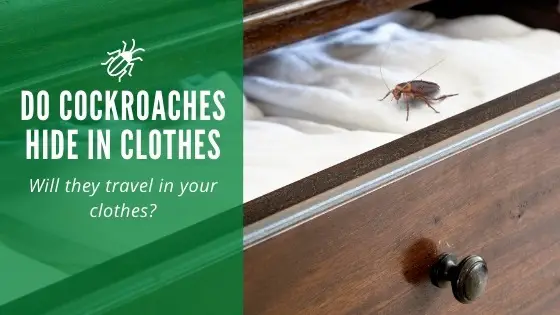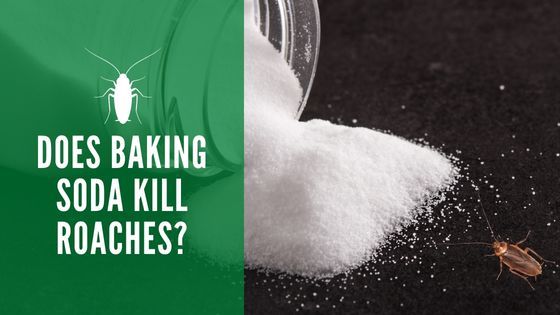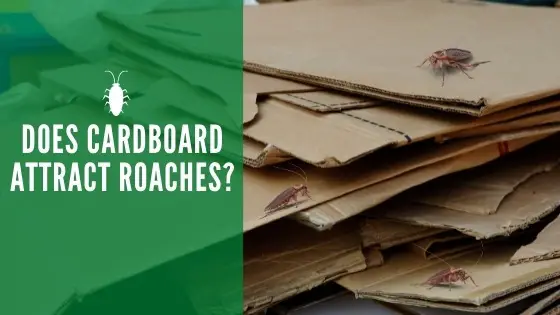Roaches In House After Rain

Whenever you are caught out in a fearsome rainstorm with nothing more than an umbrella to protect you, what is the first thing you do? Well, you need to seek some shelter, and typically that shelter is your own home. You can find warmth, water, food, and more inside of it, and then you will be able to wait out the storm safely.
Sadly, insects are the same way. They seek shelter whenever they get caught in the rain, but since the storm often washes away their homes, they need to find shelter elsewhere. This means that they will invade your home in search of safety. After a storm, the number of cockroaches and other flying insects will increase inside of your home even though you might have been working on getting rid of them.
Some bugs, such as mosquitoes, even become more aggressive in the rough wet weather. They will take the opportunity to come out post-storm and start laying eggs in all of the stagnant water lying around. Then those eggs hatch, and you’ve got even more mosquitoes.
Plus, cockroaches start to come by, and they are hard enough to get rid of when they are just idling around. How do you stop a cockroach with a mission of getting into your home by any means? Well, you can make a few changes to keep the bugs out and your sanity in! Even after the toughest storms, you can keep the bugs out!
How To Keep Roaches Out Of Your House
Trim Your Trees
Sometimes we let our trees, foliage, and plants get a little out of control. The plants start to grow and eventually end up scraping against our home. When this happens, bugs can and will use those plants like bridges to clamber across them and get into your home. Then they’ll get on the walls and the roof to find a way inside.
Make sure to walk around your home, especially if you are aware of a massive storm, and trim your plants back, so they don’t touch your home. Then the bugs won’t be able to use them to get inside.
Seal The Open Holes
You might have a crack in your foundation, a hole in your brick wall, or a window that will not close all the way. Those are open doors for the insects of the world to get into your home after a storm, and you need to seal them away. You should caulk up your cracks and windowsills, use vent covers to cover the vents and seal any holes in your walls.
Don’t underestimate the desire of an insect to get into your home. A good patch and caulking job will help to keep the cockroaches from entering your home.
Clear Their Shelter
Cockroaches species like the American cockroach, German cockroach, and the oriental cockroach love damp and warm places to wait out the aftermath of a storm, so make sure to clean those places. Clean the attics, basements, crawl spaces, garages, and any other space that provide a good hiding place for roaches.
If you can’t clean the space, spray the space with cockroach repellent to keep the bugs away or spread some boric acid to eliminate chances of a roach infestation.
Prevent Access To Food and Water

Bugs and cockroaches want food and water after dealing with a massive rainfall, and you need to prevent them from getting it. Wash your dishes and clean up any crumbs, make sure your cabinets are closed up tight, and also try to fix any leaking faucets or standing water in your kitchen and bathroom. Think like a cockroach and figure out where you would get water and food. Then do your best to clean and fix up those areas.
You should also clean up spills when they occur, vacuum and mop your kitchen floors, take out the garbage, and put away the pet food. Doing periodic deep cleans of your kitchen will prevent it from becoming an unmanageable mess by the time the storm occurs.
Apply Salt
One of the easiest ways to keep roaches out of your home is by applying table salt around your home. A few pinches every three or so feet will do, and cockroaches hate salt. They’ll stay far away from your home if you have a strong barrier throughout your rooms, even if a big storm is forcing them inwards.
Salt sucks the moisture out of the bodies of most insects, cockroaches included. The ammonium nitrate and chloride inside of the salt wards them off and sends them scurrying away. However, it won’t kill them. It’s a repellent, but for a roach who is soaking wet because of a storm, they aren’t going to risk crossing the salt to get into your home.
This is not a common strategy due to the large amount of salt you will need to use, but it can sometimes be an effective strategy.
Proactive Pest Control
It is much harder to get pests out of your home than to make sure that they never enter it. You know that almost all pests will be heading towards houses when the rain falls, and chances are some of them will end up in your home. If you know what your pests will do, you can take steps to prevent them.
Make sure to be protective and perform maintenance every so often on your home. Trim your bushes, clean the kitchen, declutter any moist or damaged areas, and make sure that your home is fortified from entry. The more you can do now before the storm hits, the less you will need to do whenever the storm ends.
The unwanted pests won’t be getting into your home anytime soon, and you can focus on getting through the aftermath of the rainy season with your family, not with the bugs! That’s certainly a better option.
Sources:
https://www.treehugger.com/how-to-get-rid-of-roaches-naturally-4864331
https://www.ortho.com/en-us/library/garden/why-does-bug-activity-increase-after-rain
https://entomology.ces.ncsu.edu/2015/10/rain-related-pest-problems/



